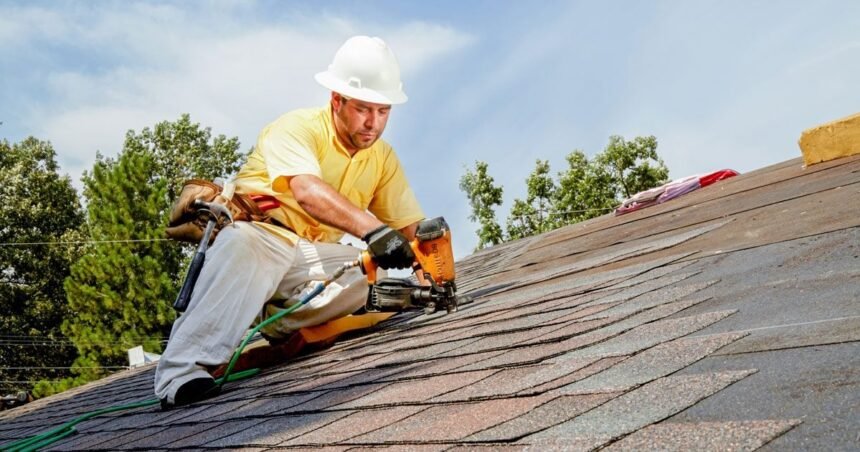Introduction
The roof over your head does more than complete the look of your home—it shields everything you care about from the elements. Over time, even the most durable roofing systems succumb to wear and tear. From minor leaks to storm damage, roof repair becomes not just necessary, but urgent.
Neglecting small roofing issues can lead to bigger, costlier problems—interior water damage, mold growth, insulation loss, and even structural deterioration. This in-depth guide will help you understand when, why, and how to tackle roofing issues effectively. Whether you’re a new homeowner or someone trying to extend the life of your existing roof, this article will give you the knowledge to make smart decisions.
Why Timely Roof Repair Is Critical
Delaying roofing repairs doesn’t just affect aesthetics—it threatens the very structure of your home. Here’s why acting fast matters:
- Water Intrusion: Even a small leak can cause significant interior damage.
- Mold & Mildew: Moisture creates an ideal environment for biological growth.
- Insulation Damage: Water compromises the effectiveness of attic insulation.
- Rising Energy Bills: Drafts and moisture can increase heating and cooling costs.
- Structural Risks: Prolonged moisture exposure can rot roof decking and framing.
The longer you wait, the more expensive the repair—or full replacement—may become.
- Common Causes of Roof Damage
Understanding the root causes can help you prevent or spot issues earlier.
🔧 1. Weather Damage
- Hail can dent metal and crack shingles.
- High winds can lift or tear off shingles.
- Heavy rains can exploit weak points, leading to leaks.
🔧 2. Poor Installation
If your roof wasn’t installed correctly, problems can arise within just a few years. Common signs include misaligned shingles, poorly installed flashing, and improper ventilation.
🔧 3. Aging Materials
All roofing materials have a lifespan. Asphalt shingles usually last 20–30 years, while metal, tile, and slate can last much longer. Still, they all eventually degrade.
🔧 4. Lack of Maintenance
Neglecting gutters, failing to replace cracked shingles, or ignoring minor leaks can turn small issues into big ones.
🔧 5. Pest Infestation
Birds, rodents, and insects can nest in vents or under shingles, causing unseen damage.
- Signs You Need Roof Repair
Many homeowners don’t realize their roof is damaged until it’s too late. Here are key warning signs:
- Water stains on ceilings or walls
- Curling, cracked, or missing shingles
- Granules in gutters (common with aging asphalt roofs)
- Sagging rooflines
- Light shining through attic boards
- Moss or algae growth
- Spike in energy bills
If you notice any of these, it’s time to schedule a professional roof repair before the problem spreads.
- Types of Roof Repairs
Depending on the extent of the damage, repairs may range from simple patching to partial replacement.
🛠️ 1. Shingle Replacement
Missing or damaged shingles are replaced with matching ones to maintain the roof’s integrity and appearance.
🛠️ 2. Flashing Repairs
Flashing protects areas like chimneys and vents. Damaged flashing can lead to leaks and must be resealed or replaced.
🛠️ 3. Leak Patching
Water entry points are sealed using specialized roofing materials. Proper inspection is crucial to locate all sources.
🛠️ 4. Gutter and Vent Work
Sometimes, the issue isn’t the roof but clogged gutters or faulty vent boots. Replacing these can resolve leaks or drainage issues.
🛠️ 5. Roof Deck Repair
When water seeps through for too long, it can rot the wood underneath. This may require removing shingles and replacing decking panels.
- The Roof Repair Process: What to Expect
Hiring a professional doesn’t mean losing control of the project. Here’s what typically happens during a Roof Repair:
- Inspection: The contractor evaluates your roof from both the exterior and interior (attic) to assess damage.
- Estimate: You receive a detailed quote including labor, materials, and timeline.
- Permits (if needed): Depending on your area and the scope of work, permits may be required.
- Execution: The crew will perform the repair—ranging from a few hours to several days based on complexity.
- Cleanup and Final Walkthrough: Reputable contractors clean up debris and invite the homeowner to inspect the results.
- DIY vs. Professional Roof Repair
While it may be tempting to save money with a DIY approach, roofing work isn’t always suitable for amateurs.
When DIY May Be Acceptable:
- Replacing a single shingle
- Cleaning gutters
- Applying minor sealants
When to Hire a Pro:
- Extensive leaks
- Structural damage
- Working at height (safety concerns)
- Warranty issues (DIY can void warranties)
- Insurance claims (professionals provide documentation)
A licensed contractor brings experience, proper tools, and safety gear—plus they ensure the job complies with local codes and manufacturer standards.
- How Much Does Roof Repair Cost?
The cost depends on the type and severity of damage, materials involved, and your roof’s pitch and accessibility.
- Roof Repair vs. Roof Replacement: How to Decide
Sometimes it’s hard to know if you should repair your roof or replace it entirely.
✅ Choose Repair If:
- Damage is isolated
- Roof is less than 15 years old
- No recurring leaks
❌ Consider Replacement If:
- Damage affects more than 30% of the roof
- Roof is near the end of its lifespan
- Repairs have become frequent and costly
A trustworthy contractor will provide an honest assessment and help you weigh both short-term and long-term costs.
- How to Extend the Life of Your Roof
Prevention is the best kind of repair. Here are tips to keep your roof healthy for years to come:
- Inspect your roof twice a year—especially after storms.
- Clean gutters regularly to prevent water backup.
- Trim nearby trees to reduce debris and prevent branches from causing damage.
- Remove moss or algae to prevent shingle degradation.
- Address small issues immediately before they escalate.
- What to Look for in a Roof Repair Contractor
Choosing the right contractor can make all the difference.
✔️ Qualities of a Good Contractor:
- Licensed and insured
- Positive reviews and local references
- Transparent pricing and warranties
- Specialization in your roof type
- Strong communication throughout the project
Get multiple estimates, ask about materials, timelines, and make sure everything is in writing before work begins.
Conclusion
Your roof works hard every day, silently protecting your home from rain, wind, sun, and snow. Keeping it in good shape isn’t just about avoiding costly repairs—it’s about preserving the comfort, safety, and value of your home. Whether you’re dealing with a minor leak or more significant storm damage, taking timely action through proper roof repair is essential.
While some issues might seem small, they rarely stay that way for long. Working with a trusted contractor ensures that the job is done right the first time—saving you money, stress, and future headaches.
If you’re noticing signs of damage, don’t wait. Schedule a professional roof repair inspection today and keep your home protected from the top down.
For More Information, Visit Dotmagazine









